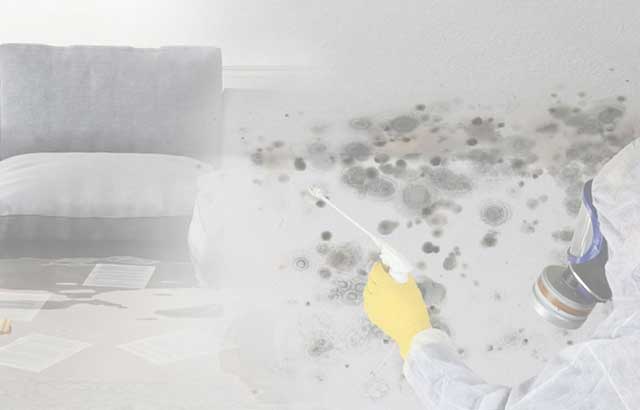Typical Causes of Water Damage in a Bathroom
Schedule A Free EstimateHow do you really feel when it comes to How to Prevent Bathroom Water Damage?

The restroom is very vulnerable for moist build-up and also potential water damages as a result of the frequent use of water in it. This post offers easy assessment techniques to assist identifying water damages dangers.
The constant use water in the washroom makes it incredibly prone for damp build-up and also potential water damage. By checking it on a regular basis, you can minimize water relevant problems.
The adhering to collection of examinations is very easy to execute and also ought to be done when in every three months in order to keep your shower room in good shape and to prevent prospective water damages triggered by the bath tub, the shower, pipeline joints and also plumbing, sinks, closets, as well as the commode
Do not forget executing these inspections and be comprehensive while performing them. Keep in mind that these easy evaluations can save you a lot of money by supplying early signs for water damages
Sinks and also Cabinets
Sinks and also closets are revealed to moisture and humidity daily and are frequently overlooked. Inspect regularly under the sink and on the countertop above it. Fix any kind of drip in the catch as it might recommend drain problems. Look around the sink, slow draining pipelines might suggest an obstructed drainpipe. Change sink seals if they are split or loose.
Bathtub and Shower
The shower and also bath tub call for special attention and upkeep. Examine the ceramic tiles as well as change if split. Ensure that there is no missing grout in between the ceramic tiles. Examine and change split caulking at joints where the walls meet the flooring or the bath tub. Blocked drains pipes as well as pipes problems will certainly stop the bathtub from drying out and also may indicate significant issues below the bath tub. Seek advice from a specialist right away to prevent architectural damage. Pay attention to stainings or soft areas around the bath tub walls as they may show an interior leak.
Plumbing
Signs for water damages are hard to find because most pipelines are installed inside the walls.
Pay unique interest to floor covering as well as walls dampness and discolorations as they may show an invisible plumbing issue. Examine wetness levels in adjacent rooms also.
The Toilet
The bathroom is a vulnerable water joint. Check the water lines and also search for leakages around the commode seat, in the pipe, and under the water storage tank. If you detect any type of signs of wetness on the floor around the bathroom, look for leaks in the toilet edge and storage tank seals.
Understand that hanging commode bowl antiperspirants increases the possibilities for obstructions.
Water Damage Signs In The Bathroom To Avoid Cleanup
Musty smell
This is one of the easiest signs to catch because musty smells are so odorous. The damp, earthy, moldy smell should be a big red flag. The smell will develop when moisture gets trapped in surfaces, and begins to facilitate mold growth. Leaking pipes under cabinets, inside walls, and behind shower fixtures will cause moisture to stay trapped and not dry, which will lead to mold growth and spread. As soon as you notice any musty smells in your bathroom, have it checked for hidden water damage and cleanup signs.
Visible mold
If the smell isn’t there to give it away, sometimes you will actually see mold growth. Finding mold in your bathroom is a serious problem, because mold is very harmful to your health. By the time mold growth is visible, it also means that water damage has already occurred and been present for some time. The only way the mold problem can be resolved is to find the source of the moisture and get it stopped. To safely and adequately remove mold, you need to have professionals handle the remediation. Do not waste any time in getting mold problems addressed, fixed, and sanitized so that you can protect you and your family from the many respiratory symptoms caused by mold exposure.
Damaged floors
Bathroom floors should be able to withstand some exposure to water while still remaining in good condition. However, when excess exposure or water leaks occur, they will begin to damage even the most water-resistant flooring. If you notice any cracking, bubbling, staining, or warping on your bathroom floors, there is probably a water leak somewhere causing the distortion. If you notice areas of the floor have become softer, or even have a spongy feeling, there is probably damage to the subfloor. Subflooring is typically made up of plywood. When plywood is exposed to water or moisture, it will absorb it. Once it has become saturated, the weight of the excess water will cause the wood to swell and soften. Check the floors in your bathroom frequently to catch any of these sings before they lead to damaged subflooring.
Changes on walls
When water leaks behind walls, it will cause changes in the drywall. Peeling plaster, blistering paint, and soggy wallpaper are all good indicators that excess water is building up behind the wall. Water leaking behind drywall will cause it to swell and be soft to the tough. If you start to notice gaps along the trim of your walls, or where tile meets the wall, it could also be a strong indicator that there is a leak behind the wall. Any changes, distortion, or damage on the walls should be evaluated as soon as you notice it to prevent further water damage and cleanup.

We were shown that article on Looking for Signs of Water Damage in the Bathroom from someone on a different web address. Remember to take the opportunity to promote this blog post if you enjoyed reading it. Thanks so much for going through it.
Here